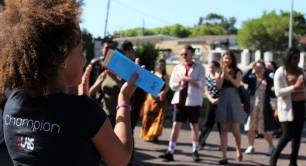Six social enterprise essentials: Why only common ownership can create system change
Social enterprise has drifted too far from its roots, says Freer Spreckley, who was among the first to formulate the concept in the UK in the 1970s. In our exclusive serialisation of his latest book, the social enterprise pioneer sets out six key principles that should define social enterprise. First: common ownership.
The thing about social enterprise is that it's about organisational system change and, therefore, cannot rely on a single change. It requires a coherent and substantive change to achieve different outcomes and impacts than single-focused profit maximisation. These include widening the commercial purpose with the social and environmental mission; common ownership forms of ownership; internal social wealth creation through democracy; environmental responsibility in its operations and supply chains; being financially viable and independent; using a social accounting and audit system for planning, implementation and accountability. It's about all six of these values aligned to change how we own, run and operate commercial and non-commercial organisations.
Changing technology, infrastructure, materials and ways of working is not enough to avert the world from an economic, societal and ecological catastrophe. The alignment of these three challenges creates an economic imbalance where a few people will manage the looming crises easily, some will get by, and many will suffer unimaginable hardship, the result of which will increasingly divide global society and hasten irreversible decline. Are we in the throes of a catastrophic exponential curve nearing the point of no return, where the history of what we had and lost is likely to become the focus of our future?
Mission on its own quickly becomes a slogan, and slogans have a habit of becoming empty rhetoric
The economic system of concentrated ownership, control and unfettered financial growth at all costs by a small cohort of global elites skews the economy, causing economic and environmental poverty for many worldwide.
Any tinkering around with social mission or charity does not deal with the causes of the catastrophic curve; they can quickly be subsumed and exploited within this controlling system to pretend that "we are all in this together". Mission on its own quickly becomes a slogan, and slogans have a habit of becoming empty rhetoric. The social enterprise idea was not developed to shame corporate greed – it was created to initiate corporate system change through lasting and structural legal means.
System change is at the heart of social enterprise. I think there is no easier or more direct way to develop a fairer society than a legal change of ownership from the elites to the non-elites. Social enterprise is an intentional challenge to the status quo, designed to fundamentally alter the values, governance, structure and components that cause the system to push the world towards the catastrophic curve many say we are currently experiencing.
Stifling inequality
In 1981, I wrote what is believed to be the first paper on social enterprise (‘Social audit: A Management Tool for Co-operative Working’). It stated: "An enterprise owned by those who work in it and/or reside in a given locality, is governed by registered commercial, social and environmental aims and objectives and run co-operatively may be termed a social enterprise. Traditionally, 'capital hires labour' with the overriding emphasis on making a financial 'profit' over and above any benefit either to the business itself or the workforce. Contrasted to this is the social enterprise where 'labour hires capital' with the emphasis on social, environmental and financial benefit for co-owners, the local community and the wider environment."
Structural inequality is as old as society, but does that mean it's unchangeable? It's like asking how we can give up meat when we've always been carnivorous, or asking how we can prosper without a god, or claiming heterosexuality is the only way animals and humans can live together. Everything can change, and in an emergency such as the catastrophe curve, some things must change to survive.
The solution to structural inequality is to use the law to change the ownership bias towards the many
In a global society, ownership, decision-making, influence and benefit are tied tightly into an impenetrable web of power relations and privilege. Structural privilege is something we either benefit from or are disadvantaged by; it's not new and can have a marginal impact in small doses. But, since the 1970s, the economy has gone global and built up excessive structural inequality. In 2016, over 50% of global asset ownership was held by only 1% of the population, with the bottom 71% of the world's population controlling just 3% of the globe's wealth. In 2021, the Chicago Booth Review noted that "in America, the 1% can be divided into four categories. The top 0.01% share of wealth accumulated by 20 individuals is now greater than the total wealth of all the other members of the 1% club." As the economist Thomas Piketty found, the rate of return on capital has outpaced the rate of economic growth. When that happens over an extended period, the wealthy can see their riches accumulate while inequality worsens. Its effect has now reached intolerable levels. It is stifling society, skewing the economy away from its core tenets of open and free trade, and creating a state of irrelevance for billions of people. The interests of the very rich owning 1% are irreconcilable with the interests of the mass 99% of the world's population.
Guaranteeing rights
The solution to structural inequality caused by the 1% ownership bias is to use the law to change the ownership bias towards the many. To share the real and lasting wealth in society and own, in common, physical and intellectual assets. Common ownership – when all wealth of an enterprise is held collectively by its members or co-owners – is a pillar guaranteeing human rights, because legal, social and financial mechanisms exist to arrest the decline in commonly owned and shared assets. Social enterprise is based on common ownership of the enterprise by the people who create its collective wealth; it is equitable and satisfying, leading to responsible ownership and control. All it needs is the will of people to come together and take responsibility for asset ownership.
To commonly own and control assets is fundamental to reversing the march of the 1% towards owning everything.
|
Common ownership or employee ownership? This article understands common ownership according to the legal definition used in the Industrial Common Ownership Act 1976 (ICO Act), which states that a common ownership enterprise is: (a) an enterprise that has no share capital, is limited by guarantee and is a bona fide registered limited liability company, and (b) that the [articles of association] or rules of the body include provisions which secure (i) that persons who are employed by, or by a subsidiary of, the body may be members of it, (ii) and that external stakeholders, in the case of geographically defined enterprises, may be members individually or corporate, and all such persons and corporates have equal voting rights at meetings of the body. Another term sometimes used in this context is employee ownership, and although this is more precise, it is restrictive: some social enterprises are multi-stakeholder based, such as community social enterprises. The term common ownership can also refer, in legal terms, to one person or organisation owning several related companies. |
Common ownership guarantees the rights of those who create wealth to determine how that wealth is used. The value of a legally registered common ownership organisation is that all workers, and in some cases volunteers, are co-owners. In community social enterprises, local residents are co-owners. Common ownership is based on the belief that if we own an equal share of the enterprise, we will gain the most from our physical and mental inputs and be more engaged in and responsible for organising and planning our operations and behaviour. Common ownership ensures those who invest their labour have the highest return on their investment.
The principle of common ownership by co-owners of a social enterprise means that each member holds one equal-valued share and has one equal vote in decision-making. Common ownership by co-owners underpins the democracy and equity that distinguishes social enterprise from private/corporate business.
Unless ownership is in the hands of members, there is no real change. There is just goodwill, and in time goodwill breaks down
Registered common ownership embeds the legal structure within a truly humanist ethic. People and communities need to acquire ownership of assets, land and patent rights, to have the power and control to self-determine their lives and the lives of future generations. There is evidence that many of those early social enterprise pioneers from the 1970s/80s, who legally registered their collectives as common ownership, have survived and thrived. (Examples include Suma, Scott Bader and On the Eighth Day.) Meanwhile, those who worked in someone else's enterprise, which call themselves a social enterprise on the basis of good intentions but with a legal structure, governance or profit arrangement that is no different to a for-profit business, have seen their employers subsequently wither or go bust. Unless ownership is in the hands of members, there is no real change. There is just goodwill, and after time that goodwill breaks down, and there is only private ownership.
Who owns, benefits
Since the signing of the Magna Carta 800 years ago, ownership in the UK has been the stuff of ultimate power, control and benefit. Who owns controls, who controls makes decisions, and those who make decisions do so in their own interests.
In social enterprises, shares have two purposes: first, to legally register ownership over the organisation and all its assets by co-owners. The other is to confer a financial value to the co-owners. Individuals can own an equity share of the total value of an enterprise as in a joint-stock company, or they can be a non-equity shareholder, where the value of an enterprise is held by the members collectively.
Social enterprise privately owned is ephemeral, but social enterprise commonly owned is system change
Common ownership confers system change in the most fundamental way. It affects responsibility and status for co-owners, builds self-esteem and equality, shifts control on decision making and is more inclusive when considering and deciding purpose, mission and investment. System change relates to the whole organisation of a social enterprise and will, as we will explore in the rest of this series, affect other organisational aspects more specifically.
Until there is a fundamental change of ownership, it is unlikely there will be any real and lasting change in the way businesses operate or why they are established. Without the system change from private to common ownership, organisations will continue to be run in the interests of the elite, allowing them to exploit the non-elites. Social enterprise privately owned is ephemeral, but social enterprise commonly owned is system change and better able to reverse the catastrophe curve in the interests of the many.
- Freer Spreckley is the author of 'Essential Social Enterprise: A just transition to a regenerative fair future', published 2021, and available worldwide (print on demand) from online booksellers including Booksplease. Check back soon for the next installment in our exclusive serialisation.
Thanks for reading Pioneers Post. As an entrepreneur or investor yourself, you'll know that producing quality work doesn't come free. We rely on our subscribers to sustain our journalism – so if you think it's worth having an independent, specialist media platform that covers social enterprise stories, please consider subscribing. You'll also be buying social: Pioneers Post is a social enterprise itself, reinvesting all our profits into helping you do good business, better.




